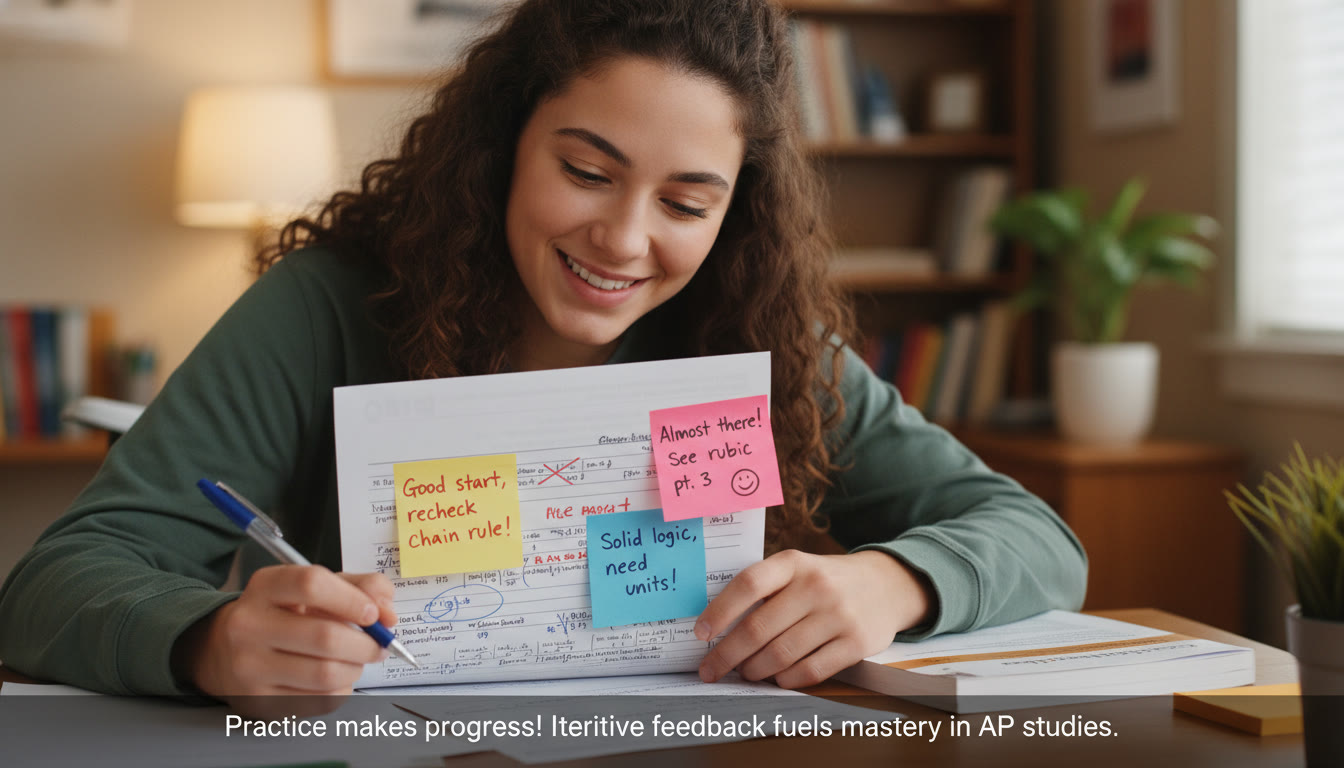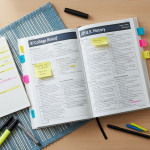Why this guide matters: bridging CBSE strengths to AP success
For many students in India, the Central Board of Secondary Education (CBSE) builds a strong foundation in science — rigorous theory, disciplined lab work, and a steady stream of board preparation. But when you look at AP (Advanced Placement) courses offered by the College Board, the structure, emphasis, assessment style, and even the sequencing of topics can feel like a different language. This guide is written for students and parents who want a practical, empathetic map: which CBSE topics align with AP units in Physics, Chemistry, and Biology, where gaps commonly appear, and how to fill them efficiently.
Think of this as a translator and a study coach in one: we’ll compare syllabi, highlight common pitfalls, show how to prioritize time, and offer actionable tips — including how one‑on‑one, tailored support (for example, Sparkl’s personalized tutoring and AI‑driven insights) can plug the last-mile gaps and boost confidence before the exam.
At a glance: How CBSE and AP syllabi differ
Before diving into subject-by-subject mappings, it’s useful to understand the high-level differences that drive most of the “gaps” students experience:
- Assessment style: CBSE board exams test mastery of prescribed content and problem solving. AP exams emphasize conceptual understanding, application, and exam strategy — e.g., free‑response questions (FRQs) that demand explanation, reasoning, and data interpretation.
- Depth vs. breadth: CBSE sometimes covers topics in a broad sweep with a prescriptive lab component; AP courses are unitized and often require depth in analysis, experimental design, and quantitative reasoning.
- Laboratory practice: AP lab frameworks value inquiry‑based investigation and experimental design; students must be comfortable interpreting data and explaining how an experiment tests a hypothesis.
- Terminology and notation: Small differences in symbols, units, or conventions (for example, how rates are expressed or how statistical statements are phrased) can trip students on AP exam wording.

How to use this guide
Read the subject section you need first, then use the table to see topic-by-topic comparisons. Each subject section will:
- Map CBSE chapters to AP unit themes
- Flag common gaps (content, skills, or exam approach)
- Offer targeted strategies to close gaps, with sample exercises and study priorities
Subject 1 — Physics: From equations to conceptual reasoning
Core alignment
CBSE Physics gives students solid grounding in mechanics, electricity, magnetism, optics, and modern physics topics. AP Physics splits into several courses (e.g., AP Physics 1, AP Physics 2, and AP Physics C — Mechanics / E&M). For most CBSE students aiming for AP physics exams, AP Physics 1 & 2 are the natural targets, unless you’re comfortable with calculus-based mechanics (AP Physics C).
Common mapping (CBSE → AP Units)
- Mechanics (motion, Newton’s laws, energy, momentum) — CBSE Class 11–12 chapters → AP Mechanics units
- Waves and optics — CBSE wave optics, light chapters → AP Wave/Optics units
- Electricity and magnetism basics — CBSE electrostatics & current electricity → AP E&M units (AP Physics 2 or AP Physics C E&M)
- Thermodynamics and kinetic theory — CBSE heat topics → AP Thermodynamics/Heat units
- Modern physics (photoelectric effect, atomic models) — CBSE modern physics → AP Modern Physics components in AP Physics 2 or relevant exam sections
Where gaps typically appear
- Conceptual reasoning: AP FRQs often test conceptual explanations more than routine numerical problems. Students trained on CBSE numerical practice sometimes write short, incomplete explanations on AP FRQs.
- Laboratory and inquiry skills: AP emphasizes designing experiments, analyzing error, and making claims supported by data. CBSE lab reports are often protocol‑driven rather than inquiry‑driven.
- Clever multi-step questions: AP questions frequently combine two or more units (e.g., dynamics + energy + rotational motion) in novel contexts.
How to bridge the gap — practical tips
- Practice AP-style FRQs regularly. Start by writing 200–300 word responses explaining reasoning step‑by‑step, and have an expert check for gaps.
- Rework CBSE numerical problems with an explanation-first approach: before calculating, write the qualitative prediction — what will increase, decrease, or stay the same and why.
- Do inquiry labs: design a simple experiment (even at home) to test a prediction (e.g., how incline angle affects acceleration). Practice creating graphs, calculating uncertainties, and writing conclusions tied to evidence.
- Use targeted timed practice: AP sections are time-pressured. Simulate timed sections and review not just answers but explanation quality.
- One-on-one coaching (for instance Sparkl’s personalized tutoring) can quickly convert strong CBSE fundamentals into AP-style reasoning through tailored feedback and targeted FRQ work.
Subject 2 — Chemistry: Stoichiometry plus chemical thinking
Core alignment
CBSE Chemistry covers extensive inorganic, organic, and physical chemistry across Class 11 and 12. AP Chemistry organizes content around big ideas, such as atomic structure, intermolecular forces, chemical reactions, kinetics, thermodynamics, and equilibrium. Much of CBSE content maps well; the key is shifting emphasis from memorization to chemical reasoning and quantitative lab interpretation.
Common mapping (CBSE → AP Units)
- Atomic structure and periodic trends — CBSE foundational chapters → AP models of atoms unit
- Chemical bonding and molecular structure — CBSE bonding chapters → AP structure and properties unit
- Stoichiometry and reactions — CBSE reactions and quantitative chemistry → AP chemical reactions and stoichiometry unit
- Equilibrium and kinetics — CBSE equilibrium and rates chapters → AP kinetics and equilibrium units
- Thermodynamics and electrochemistry — CBSE energetics, electrochemistry → AP energy and redox units
Where gaps typically appear
- Lab reasoning: AP Chemistry FRQs often ask students to interpret experimental data, choose appropriate controls, or predict outcomes when conditions change.
- Mathematical rigor: AP expects consistent use of significant figures, molarity calculations, and thermochemical math in contextual problems.
- Conceptual linking: AP questions frequently ask students to connect molecular-level phenomena (intermolecular forces) to macroscopic observations (boiling point), not just list properties.
How to bridge the gap — practical tips
- Convert CBSE labs into AP-style lab discussions: write short lab scenarios and practice answering why results support a hypothesis, what errors could exist, and how to improve the design.
- Work on data interpretation: graphs, titration curves, and rate plots appear often — practice reading slopes, intercepts, and what they imply.
- Practice system-level thinking: given an unfamiliar compound or reaction, ask yourself systematically: structure, bonding, intermolecular interactions, macroscopic properties.
- Targeted tutoring sessions focused on FRQ chemistry and data analysis — such as those provided by Sparkl — can reduce the learning curve by offering tailored practice and expert correction.
Subject 3 — Biology: From factual knowledge to evidence-based argument
Core alignment
CBSE Biology is content-rich and often heavy on taxonomy, plant and animal physiology, genetics, and ecology. AP Biology focuses on four big ideas: evolution; cellular processes (energy and communication); genetics and information transfer; and interactions. The CBSE knowledge base is an asset — the work is in learning to frame explanations within AP’s evidence-based context and to analyze experimental data rigorously.
Common mapping (CBSE → AP Units)
- Cell structure and energetics — CBSE cell biology → AP cellular processes units
- Genetics and evolution — CBSE genetics and evolution topics → AP heredity and evolution units
- Physiology and organismal biology — CBSE physiology chapters → AP organismal and systems units
- Ecology — CBSE ecology topics → AP ecosystems and conservation units
Where gaps typically appear
- Argumentation with evidence: AP Biology FRQs expect claims supported by data, clear reasoning, and appropriate use of biological terminology.
- Experimental design and reasoning: designing a controlled experiment and predicting outcomes based on mechanisms is frequently tested.
- Interpreting graphs and genetic crosses with complex scenarios requires practice beyond CBSE’s standard problems.
How to bridge the gap — practical tips
- Practice the CER method (Claim, Evidence, Reasoning): for every practice FRQ, write one-sentence claims, then back them with specific data and a reasoning paragraph that ties data to biological mechanism.
- Work backwards from data: when given a graph, ask what hypothesis it supports, what controls were used, and which alternative explanations remain.
- Drill with mixed-topic practice: AP Bio often combines genetics with evolution or ecology with physiology. Create mixed practice sets.
- Use personalized tutoring for targeted weakness: a tutor can give focused feedback on written FRQs, lab reports, and data interpretation — this is where Sparkl’s tailored study plans and expert tutors shine for many students.
Quick study plan: 12 weeks to AP readiness (if you already have a CBSE background)
This condensed schedule assumes you’ve already finished most CBSE content. It prioritizes AP skills — FRQs, experimental reasoning, and targeted concept drills.
- Weeks 1–4: Fundamentals revision + concept checks. Focus on units that overlap most with your AP exam selection. Begin one timed multiple-choice section per week.
- Weeks 5–8: FRQ immersion. Write 2–3 FRQs per week, get feedback, revise. Start weekly lab‑design practice and data interpretation.
- Weeks 9–10: Timed full sections. Take one full practice test every 7–10 days. Analyze weaker areas and do micro-sessions on those topics.
- Weeks 11–12: Polishing and strategy. Review common traps, finalize formula/terminology sheets, and simulate exam day routines.
Sample comparison table: Key topics and expected AP emphasis
| Topic Area | Typical CBSE Coverage | AP Emphasis | Gap To Bridge |
|---|---|---|---|
| Mechanics | Equations of motion, forces, energy, momentum | Conceptual problem solving, FRQs combining units, lab data for motion | Explain reasoning, design motion experiments, integrate topics |
| Chemical Equilibrium | Le Chatelier’s principle, Kc calculations | Quantitative equilibrium shifts, data analysis from titrations/graphs | Practice with real data, graph interpretation, uncertainty |
| Genetics | Mendelian crosses, molecular basics | Population genetics links, data-driven inheritance patterns | Connect molecular mechanisms to population-level patterns |
| Electrochemistry | Redox basics, cell potentials | Interpreting cell potential data, linking to thermodynamics | Thermo math practice and problem framing |
| Ecology | Ecosystems, food chains, cycles | Data-based ecosystem analysis, human impact case studies | Practice designing and interpreting field experiments |
Practical exercises you can start today
- Turn a CBSE lab into an AP lab report: choose any CBSE practical, write a hypothesis, identify variables and controls, sketch expected data, and write a 300–400 word argument connecting results to the hypothesis.
- FRQ warm-up: pick a concept (e.g., conservation of momentum), write a concise claim for a hypothetical scenario, then list three pieces of evidence you would collect to support the claim.
- Data detective: take any graph from a textbook and write five exam-style questions a grader might ask — then answer them with explicit reasoning.

How parents can help — practical support without becoming the tutor
Parents play a crucial role: emotional scaffolding, resource selection, and managing routines. Here are simple, impactful steps you can take:
- Encourage consistent routines: short, focused study sessions beat last-minute marathons.
- Provide study structure: set goals like “one FRQ and one lab write-up per week” and celebrate progress.
- Invest in targeted help: a few months of personalized tutoring for FRQs and labs is often more effective than generic test books. Tailored programs (such as Sparkl’s one‑on‑one guidance and AI‑driven insights) can provide rapid returns by identifying specific weaknesses and designing practice that targets them.
- Support exam logistics: ensure test registration, practice with timed sessions, and cultivate healthy sleep and nutrition habits before exam days.
Common myths and the realistic truth
- Myth: “If I ace CBSE, I’ll ace AP without extra work.” Truth: A strong CBSE foundation helps enormously, but AP’s question style requires extra practice in argumentation, data analysis, and FRQ writing.
- Myth: “AP is only for US college applications.” Truth: AP courses and scores can help with US, Canadian, and many other international universities — and the study skills transfer to any scientific program.
- Myth: “You need weeks of study for labs.” Truth: With focused, guided practice (targeted lab exercises and feedback), students can learn AP lab skills efficiently in a few concentrated weeks.
When to consider Sparkl’s personalized tutoring (and what it does differently)
Not every student needs the same help. Personalized tutoring is most useful when:
- You have topic-specific gaps (for example, data analysis or FRQ structuring) that slow your progress.
- You want rapid improvement in a short time window before an AP exam.
- You value tailored study plans, ongoing feedback, and tracked progress.
Sparkl’s approach — one‑on‑one guidance, tailored study plans, expert tutors, and AI‑driven insights — can speed up the conversion from CBSE knowledge to AP exam skills by focusing on high‑impact practice and personal weaknesses. A short series of diagnostic sessions will reveal which units to prioritize and set concrete weekly goals.
Final checklist — what to do this month
- Pick your target AP course(s) and get the official Course Description — plan around the units.
- Schedule a baseline practice test to identify weak areas.
- Create a weekly plan: one FRQ + one lab/data problem + four short review sessions.
- Book at least 4–6 targeted tutoring sessions if you want accelerated progress; focus them on FRQs and lab skills.
- Practice timed sections and polish your exam-day routine (sleep, food, and a calm mindset).
Parting encouragement
Transitioning from CBSE to AP is not about reinventing your study habits — it’s about shifting emphasis. You already have a strong content foundation. The remaining steps are deliberate: practice evidence-based reasoning, tighten math and data skills, and simulate the timing and format of AP exams. Small, focused efforts — the kind you can accomplish with a clear plan and occasional targeted help — multiply quickly.
Whether you choose peer study groups, focused self-practice, or a blend that includes personalized tutoring like Sparkl’s, the path is accessible. Tackle the most important gaps first, practice with purpose, and remember: clear explanations, strong evidence, and tidy reasoning win AP points every time.
Ready to start?
Pick one concept today, write a short FRQ-style answer, and compare it to the rubric-style guidance in this guide. If you want a tailored study plan, consider scheduling a diagnostic session — a focused tutor can turn weeks of uncertainty into a clear road map to AP success.




















No Comments
Leave a comment Cancel